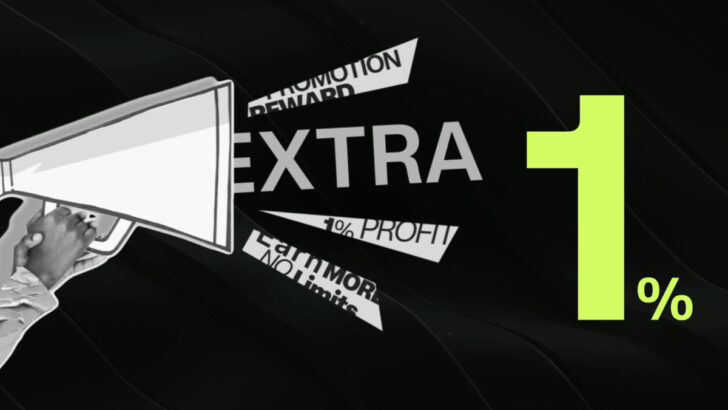Categories
Understanding VIX in Forex Trading: A Comprehensive Guide
The article also distinguishes between trading and gambling, underscoring the systematic, rule-based approach required in trading compared to the unpredictable nature of gambling.


Table of Contents
- What is a Decline Rate (Drawdown)?
- How to Check Decline Rates
- Real Decline Rates
- VIX and Its Importance
- Formulating a Trading Strategy
- Trading is Not Gambling!
- Testing Your Strategy Trading
- Only with Hercules Finance! Special Account Opening Bonus
The eBook column by FX broker Exness discusses decline rates (drawdowns) and the VIX index, emphasizing their importance in trading and risk management.
Decline rate terms like maximum, relative, and absolute drawdowns are explained, helping traders understand the potential losses in their trading accounts.
The VIX, known as the “fear index,” is highlighted for its role in measuring market volatility, which can influence trading strategies and risk assessments.
Strategies for managing decline rates and leveraging the VIX in fundamental analysis are presented, along with practical advice on setting up and testing trading strategies using demo accounts.
| Topic | Details |
|---|---|
| Decline Rate | Measures potential losses in trading accounts, with types like maximum, relative, and absolute drawdowns. |
| VIX Index | Known as the “fear index,” it measures market volatility and is crucial for risk assessment and trading strategies. |
| Trading vs. Gambling | Emphasizes systematic, rule-based trading over unpredictable gambling, highlighting the importance of strategy and risk management. |
| Strategy Testing | Discusses the importance of testing trading strategies in demo accounts to ensure effectiveness before real-market application. |
| Promotional Offers | Details special account opening bonuses available through Exness and Hercules Finance, enhancing trading leverage and opportunities. |
Explore the critical roles of decline rates and VIX in effective Forex trading strategies.
The 14th edition of the eBook column from FX broker Exness is “Decline Rate and VIX: Their Importance.”
What is a Drawdown?
What is a Trading Strategy?
What is the VIX?
We will clearly explain trading methods and strategies that are perfect for FX beginners.
What is a Decline Rate (Drawdown)?
In most cases, a decline rate refers to the period of losses that occurred in a specific trend or series of trends after making a profit.
Moreover, technically speaking, the decline rate refers to the decrease in effective margin or balance of an account in the context of risk management.
This column from FX broker Exness introduces the latter meaning of decline rate.
Terms Used with Decline Rate
Next, we explain various types of decline rates.
Maximum Decline Rate & Relative Decline Rate
The maximum decline rate is the difference between the highest and lowest balances.
A relative decline rate is when the maximum decline rate is expressed as a percentage.
Absolute Decline Rate
The absolute decline rate is the difference between the actual deposited amount and the lowest balance.
This absolute decline rate becomes important for many traders.
Current Decline Rate
Finally, the current decline rate is the ratio of the effective margin to the balance at a given point.
Examples of Each Term
Here, we will explain the details.
If a trader closes all positions simultaneously when they are currently incurring a loss of $5,000 and the balance is $12,000, the relative decline rate would be 41.67%.
$5,000 ÷ $12,000 × 100% = 41.67%
In this case, the maximum decline rate is $5,000, and the absolute decline rate is $3,000.
Simultaneously, the trader’s current decline rate would be zero (0).
How to Check Decline Rates
Traders do not need to calculate decline rates themselves.
Instead, you can check statistical information in MT5 and MT4.
First, open the Terminal/Toolbox, then open the History (History) tab.
Then right-click on any line representing a trade, hover over Report (Report), and select how to save the information.
Then, open the report from the place where it was saved.
If you scroll to the bottom of the report, you can check the statistical information about the decline rates.
Another Method to Check
Decline rates and other various information can also be checked in the Personal Area (PA).
After logging in, click on Monitoring (Monitoring) and select the account you want to check information for.
You need to have your email address and mobile phone number verified to view this tab.
Real Decline Rates
In reality, some level of decline rate is unavoidable.
This is because every trade starts with a small loss due to the spread.
Similarly, some other decline rates are unavoidable.
How to Control Decline Rates
You can control decline rates by avoiding excessive losses.
By not risking more than 1% to 2% of the total balance on each trade, you can usually keep all types of decline rates to a minimum.
To achieve this, actively use stop-loss and take-profit on important technical fronts.
Common General Thoughts & Policies
As a general rule, if the absolute decline rate or maximum decline rate reaches a total of 20%, or 5% in one day, you should apply a stop-loss and reconsider your strategy.
Here, it may be necessary to review the market, strategy, and especially the risk: profit ratio, strategy precision, and many other things.
If you reach an absolute decline rate of more than 30%, it becomes difficult to recover profits from there.
It is almost impossible to return to an acceptable amount of loss from a 90% absolute decline rate.
Prevention is better than cure.
VIX and Its Importance
Volatility broadly refers to fast, unpredictable price changes.
There are several stocks that are always highly volatile.
Usually, while relatively stable, there are stocks that become highly volatile during limited periods.
Many factors can be seen during periods when volatility increases.
For example, the most important factor during the first wave of the new coronavirus in the first quarter of 2020 was the worsening economic situation worldwide.
Other factors included the spread of the coronavirus and the impact of government and central bank policies on the economy, the dispute over oil prices and production between Russia and Saudi Arabia, and the panic selling of many stock indices.
In financial markets, the most common way to measure volatility is to use the Volatility Index, commonly known as the VIX, from the Chicago Options Exchange.
This stock index (index) measures volatility forecasts based on options for the S&P500, which is composed of major US stocks.
Traders call the VIX the “fear index.”
Recent Conditions of the VIX
At the end of March 2020, the VIX was about 84, the highest level in 30 years.
This was a sharp rise compared to the fourth quarter of 2019, which fluctuated by about 10% to 15%.
In the stock market, high volatility indicates increased fear among investors, and this usually accompanies a decrease in reliability of trends in most financial markets.
Using VIX in Fundamental Analysis
Managing the effects of volatility is a very labor-intensive process.
A well-known method is to focus on somewhat short-term opportunities.
During periods of high volatility, the mission of FX broker exness is to maintain stability in trading conditions.
One of the most important values that exness places the most importance on is transparency.
During periods of volatility and changing conditions that may affect services, traders are provided with as much information as possible as quickly as possible in their language.
The various services provided by exness help traders efficiently manage the impacts of volatility.
Formulating a Trading Strategy
A trading strategy is something that connects everything to make trading systematic.
Strategically trading is widely accepted because by setting rules and trying them out, more or less consistent results are obtained.
On the other hand, random trades or mood-based trades at certain times do not involve trial and error and, even if they profit, cannot be reproduced, leading to potential losses.
Achieving Goals with Trading Strategy
In the end, everything you have learned in this eBook column from terms to indicators is useless unless you understand how to combine them.
Even the world’s leading authorities on technical analysis would become disastrously untalented traders without managing risk.
Strategically trading reduces stress and trading time and increases the likelihood of achieving realistic goals.
Trading is Not Gambling!
Before we look at how traders formulate strategies, let’s look at the main principles that decisively differentiate trading from gambling.
Gambling is entertainment.
Usually, in the sense of the word, gambling involves too many changing matters and lacks sufficient data to have a “strategy.”
On the other hand, trading can be said to be an investment using funds with a betting timeline, at least in the sense of the word for the general public.
Trading is not a game to be enjoyed, so you should not approach trading in a playful mood.
Logical and strategic trading can yield continuous profits over months and years.
| Gambler | Trader | |
|---|---|---|
| Strategy | None (even if there is, it is ignored) | Has a clear and appropriate strategy meticulously verified with a demo account |
| Risk | Does not attempt to manage risk | Focuses on risk management and proportion in all trades |
| Profit | Obsessed with making large profits in a short period | Prioritizes protecting the principal and then aims for continuous profit acquisition |
| Self-control | Continues inappropriate trades with no prospect of a turnaround | Has little hesitation in cutting losses if necessary from inappropriate trades |
| Emotions | Reaches the peak of pleasure each time a profit is made, feels the depths of despair with losses | Does not become emotional regardless of trading results, always remains calm |
| Timing | Trades far beyond limits and boredom is the only motivation for trading | Trades only when an excellent opportunity arises |
| Expected Outcome | Very large losses | Continuous small profits |
Otherwise, people around the world would not have heard about making small, and very rarely huge, profits in FX.
However, it is also true that many people lose funds in trading.
The attitude of traders determines whether they make a profit or loss with derivatives.
Especially seeing trading as gambling almost certainly leads to losses in the account.
Would you rather be a gambler or a trader?
Open an exness demo account (free)
Designing a Trading Strategy
Any trading strategy is more or less built based on rules.
These rules include the timing of trading, the securities to trade, the amount to trade, and various other matters.
The point of rules is to indicate how traders should handle various situations and avoid emotional judgments.
Specific and Simple Rules
Rules need to be specific.
Ambiguous rules that can be interpreted in various ways are not good because they induce emotional thinking.
Instead, what is needed is a systematic strategic trading system that eliminates the role of intuition as much as possible and prevents random trading.
First and foremost, the simplicity of the strategy is very important.
You should not have too many rules, nor should you use complex concepts.
Usually, the more complex it is, the more likely mistakes are to occur.
Try a simple strategy first, and if it works, you can add rules or review existing rules after your knowledge and experience have deepened.
Testing Your Strategy Trading
You need to verify the strategy before using it in a live account.
You need to know if the system you created works before using actual funds.
That is, you need to verify any newly created strategy in a demo account for at least a few weeks under various conditions.
Open an exness demo account (free)
The Meaning and Purpose of Checking with a Demo Account
If the strategy consistently results in losses in the demo account, it means there is a flaw in the strategy.
Try to partially reconstruct and test it again.
All traders experience setbacks in creating strategies with a demo account.
Be patient.
On the other hand, if the strategy you created generates consistent profits in the demo account, it means you are ready to use it in a real trading account.
Here are three important points below.
1. There is No Perfect Strategy
You do not need to worry if the trading strategy you created does not generate profits in every trade.
You do not have to make a profit every time you trade.
As long as the overall revenue is positive, it is enough to make more profits than losses.
2. Don’t Forget Investor Psychology
Trading in a demo account is psychologically very different from trading with actual funds.
There is no emotional impact if you lose funds in a demo account because they are not real funds.
However, traders feel it is very difficult to control negative emotions about losing actual funds when switching to live account trading.
This is why many traders emphasize risk management rules in their strategies.
At a minimum, you need self-control to always follow the trading strategy.
3. Verification Should be Done with a Realistic Perspective
Most importantly, verification in a demo account needs to realistically reflect what you would do in an actual account.
For example, if you have $200 available as actual funds.
If you operate it with 30 times leverage, you need to set the balance in the demo account to $200 and the leverage to 30 times.
How Much Margin Should Be Set in a Demo Account?
A common mistake made by many new traders is to fill the demo account with dazzling amounts of funds and apply huge leverage.
Such verification methods are not only a waste of time but also destroy the possibility of future success.
In the demo account, you need to simulate the actual situation as much as possible.
Otherwise, it is all too easy to develop bad habits and become complacent, leading to losses.
The Simplest Trading Strategy
The rules for the first trading strategy you create should be as simple as possible.
The rules should be such that other traders can smoothly explain the strategy without getting stuck.
“6 Rules” example to look at.
This set of rules is a very famous strategic trading one, and many active traders use it as a starting point.
6 Rules
- Trade based on the main trend of the 4-hour and daily charts.
- Set the risk: profit ratio to at least 1:2. Set stop-loss and take-profit based on support and resistance (not fixed pips).
- Only place and settle orders during the main session in which the securities are traded.
- Only enter a buy if there is no nearby resistance, and only enter a sell if there is no nearby support. Enter in a gradual consolidation (holding) scene.
- Only trade when one currency is weak, or the other is strong (or both). For example, buy USD against the yen only when both EURUSD and GBPUSD are also falling.
- Reflect the actual situation in the demo account and practice for at least two months. After that, switch to actual trading using only a micro lot (0.01 lot).
This “6 Rules” is easy for any trader with basic knowledge to practice.
Implementing Strategic Trading
When putting a verified strategy into practice, you face unique challenges.
If you do not have the self-control to strictly follow the strategy, an appropriate strategy means nothing.
Especially if you use a short-term strategy, it is extremely important to practice the rules you have decided on in trading.
That is, rules are there to be followed, not to be broken.
Reviewing Trading Strategy
Traders need to be confident that the strategy is appropriate for the various psychological factors involved when using actual funds to trade.
If the system you built works in a demo account (virtual trading) but is too complicated for actual trading, you should reconsider.
Similarly, it may take some time to acquire a solid quality in trading.
As people’s personalities vary, such as being originally conservative or aggressive, the strategy should take advantage of your strengths and minimize your weaknesses.
Trial & Error Until the Strategy Fits You
There are infinite patterns of trading strategies.
In this eBook column from FX broker Exness, we limit the introduction to the concept and significance of trading strategically.
You will see individual cases in the next column about scalping.
It is also possible to build a strategy that suits you through verification in a demo account.
Only with Hercules Finance! Special Account Opening Bonus
When you open a trading account with FX broker Exness at Hercules Finance, you can receive a bonus.
Unlimited leverage becomes 30 USD!
Or,
After completing 10 lots of FX trading, 50 USD!
Bonus posting No. 1! FX broker posting No. 1! Exclusive account opening campaign held only at Hercules Finance!
FAQs
- What is a Decline Rate in trading?
- It refers to the reduction in an account’s balance or effective margin following a loss period, indicating potential financial loss.
- What does VIX stand for?
- VIX, or the Volatility Index, measures market volatility and is often referred to as the “fear index.”
- How can one manage Decline Rates?
- By using stop-loss orders and not risking more than 1-2% of the total balance on each trade to minimize losses.
- Why is the VIX important for traders?
- The VIX helps traders understand market sentiment and volatility, crucial for adjusting trading strategies and managing risks.
- What is the difference between trading and gambling?
- Trading involves strategic, calculated moves based on analysis, while gambling relies on luck and has unpredictable outcomes.
- How should a new trader approach strategy testing?
- New traders should test strategies in demo accounts to ensure they are effective before risking real money in the market.
- What are the common rules in a trading strategy?
- Trading strategies should include rules on trade timing, securities, and amounts to ensure decisions are not based on emotions.
- What is the role of a demo account in trading?
- Demo accounts allow traders to test and refine strategies without financial risk, simulating real trading conditions.
- What are key elements of a simple trading strategy?
- A simple strategy should have few rules and focus on fundamental trading principles like trend following and risk-reward ratios.
- How can trading bonuses benefit new traders?
- Trading bonuses, like those offered by Exness and Hercules Finance, can provide additional leverage and trading opportunities to new traders.








